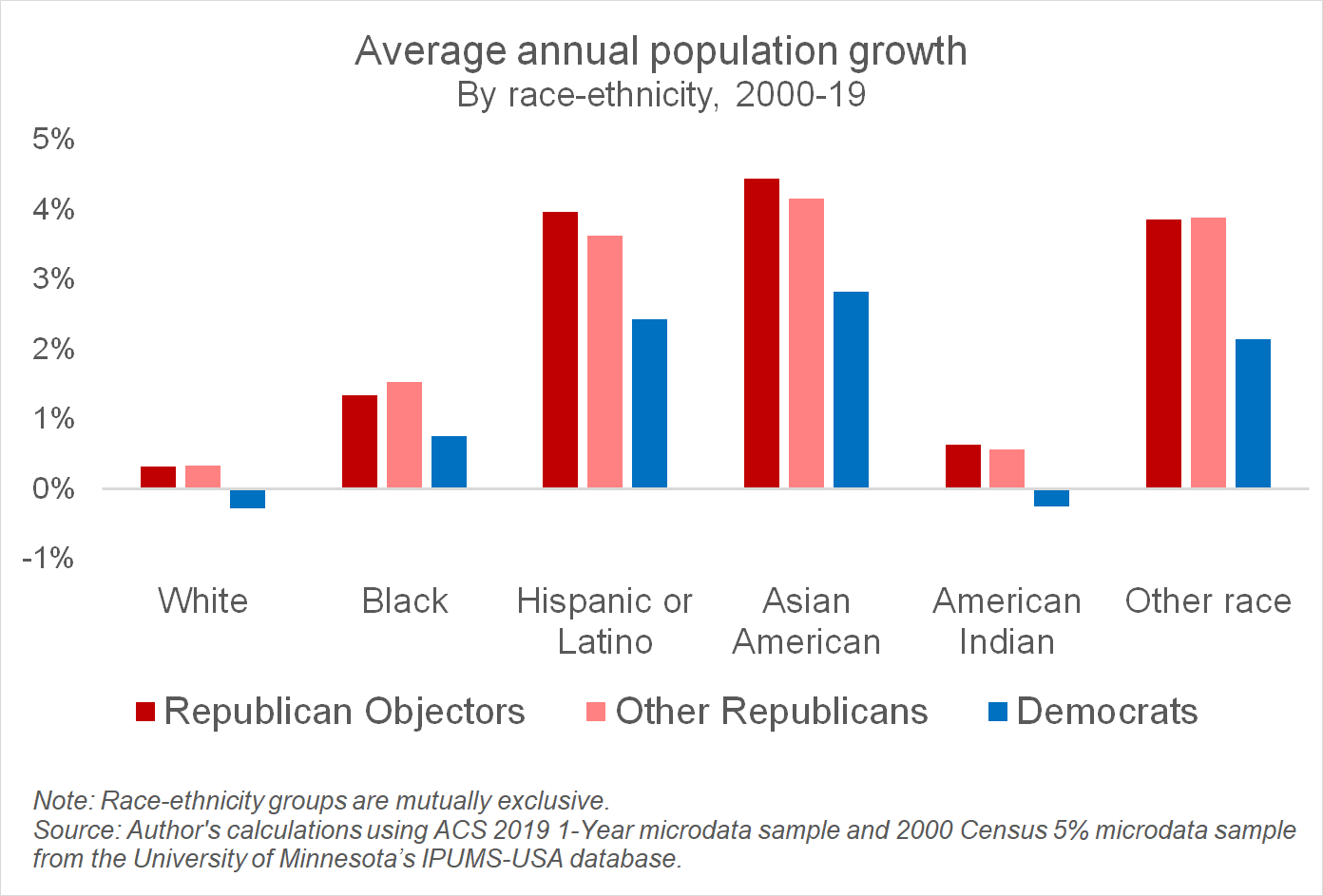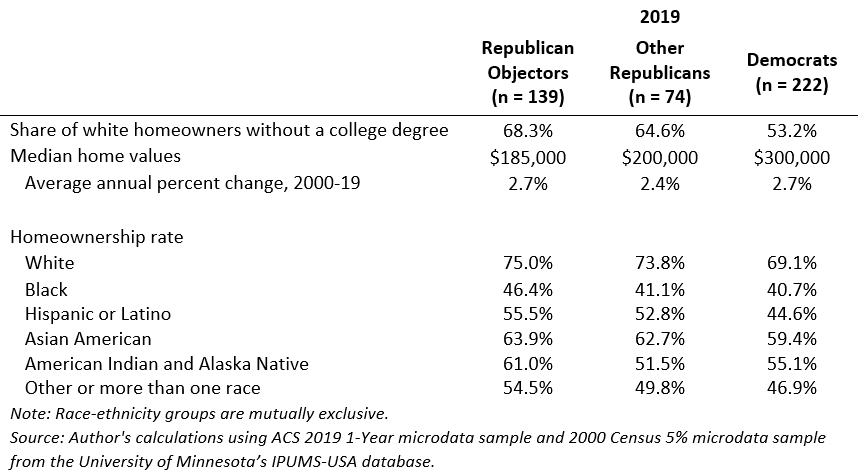Who are the seditionists?

This is a fascinating analysis from Jacob Whiton of the demographic characteristics of the districts represented by Republican members of the House who voted to throw out the results of the 2020 presidential election:
A demographic and economic analysis of the constituencies represented by the 139 Republicans who objected to the certification of at least one states’ election results helps to clarify the social and material conditions in which this right wing authoritarianism has taken root.
In particular, the evidence cuts strongly against the conventional wisdom of Trumpism as “lumpen” Rust Belt rage, originating in the country’s shrinking rural hinterland. Rather, the picture that emerges of districts represented by the most committed Pro-Trump Republicans is one of fast-growing, rapidly diversifying greenfield suburbs where inequalities between white homeowners and their non-white neighbors have been shrinking and low voter turnout has helped deliver large margins to Republican candidates.
Growing and diversifying exurbs
In addition to being considerably more suburban, as all Republican districts are, residents of objectors’ districts are more than twice as likely as residents of other Republican districts to live in exurban “sparse suburban areas.” These are districts like North Carolina’s 9th, which runs from Charlotte to Fayetteville. Representative Dan Bishop of NC-9 was the author of that state’s infamous 2016 legislation prohibiting transgender individuals from using the gendered public facilities of their choice and preempting local minimum wage ordinances. He was also a signatory to the brief in support of Texas v. Pennsylvania, President Trump’s final direct appeal to the Supreme Court to forestall the certification of his loss.

These are also among the fastest-growing districts in the country, their population growth on average outpacing that in districts represented by Democrats or other Republicans over the last twenty years. Almost all of this growth has been among non-white groups, specifically Latinos and Asian Americans, resulting in a dramatic shift in the demographic composition of these districts.
Being on average younger, this growth in non-white residents has also meant age and race have become increasingly correlated. Residents under the age of 18 are 3.6 times more likely to be Hispanic and 1.6 times more likely to be Black or Asian American than those over the age of 65. Concretely this has meant debates over policies involving a transfer of resources between generational cohorts — Social Security and Medicare, public education, housing — have also become highly polarized by race.

In their work studying the Tea Party protests of the early 2010s, Vanessa Williamson of the Brookings Institution and Theda Skocpol of Harvard identified this nexus of racial and generational resentment as central to the ideology animating its white middle class activists. Gabriel Winant, historian at the University of Chicago, has also written about the ways in which the concentration of wealth among older American has allowed the authoritarian right to stoke fears about youth-led political movements challenging their direct and indirect claims on younger Americans’ labor and income as employers, landlords, lenders, and pensioners.
White middle class stagnation, Latino and Asian American upward mobility
That constituents of Republican objectors tend to have the lowest levels of formal educational attainment in no way flatters their pretensions as working class heroes. While partisan polarization by education has risen dramatically over the last forty years, voters with higher incomes and who own more wealth, are still significantly more likely to support Republicans. This correlation may have weakened slightly in the last two presidential elections, but it remains to be seen whether this represents a durable trend of wealthier suburban Republicans abandoning the party.
The conflation of educational attainment with class obscures the extent to which many white Americans without a four-year degree receive middle class incomes and own some wealth, primarily in residential real estate and pensions.

Republican objectors represent districts where on average 68 percent of white homeowners did not have a four-year degree. It is also worth noting that a majority of all white homeowners nationwide do not possess a college education, real estate being the most equally distributed class of asset.
The whole thing is extremely eye-opening, and would be sobering if I wasn’t drinking so fast.


